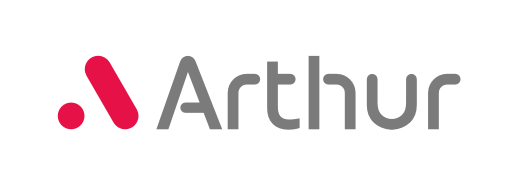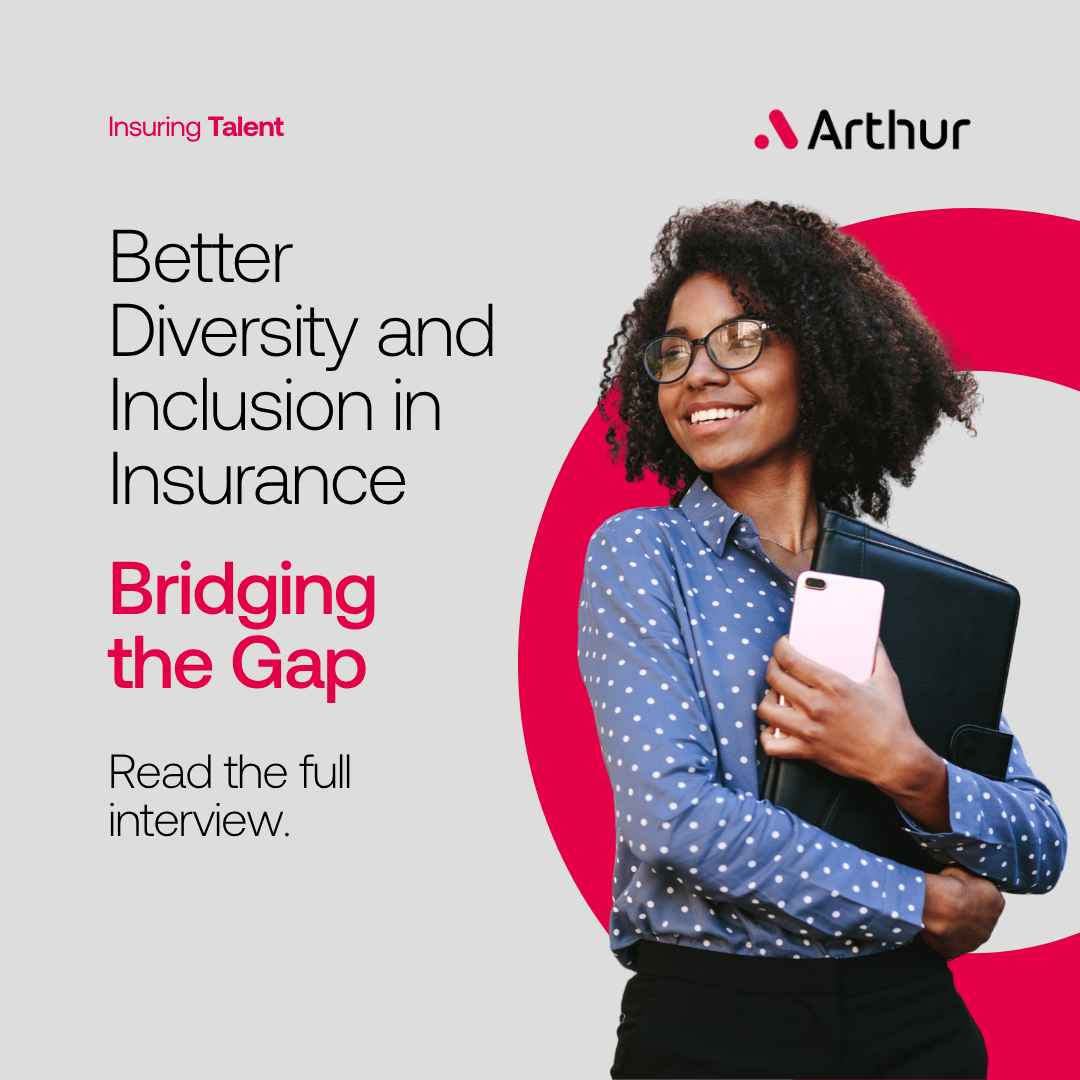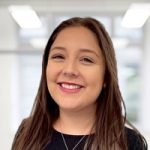In this exclusive interview, we speak with Shani Clarke, Co-Founder of Bridging the Gap consultancy, and Sofia Chaves, Insurance IT & Change Recruitment Consultant and DE&I Lead at Arthur Financial, about their collaborative efforts to increase diversity and inclusion within the insurance sector through mentoring and skill-building programmes.
Arthur Financial’s Partnership with Bridging the Gap
Arthur Financial has been working with Bridging the Gap for three years, providing essential career development support for young people from diverse backgrounds. As specialists in insurance recruitment, Arthur brings unique industry insights and professional expertise to the partnership, helping students develop interview skills, create effective CVs, and understand potential career paths within insurance.
This collaboration aligns perfectly with Arthur Financial’s own diversity and inclusion strategy, which focuses on two key areas where the insurance industry faces significant barriers: women in insurance and social mobility. By working with Bridging the Gap, Arthur Financial is making a tangible impact at the entry point to the industry, helping to create more diverse talent pipelines and addressing systemic barriers to inclusion.
The partnership not only benefits the students but has also strengthened Arthur Financial’s relationships with clients who share their commitment to diversity and inclusion.
How Did Bridging the Gap Begin and What’s Its Mission?
Shani Clarke: Bridging the Gap consultancy was formed in October 2020, emerging from conversations happening globally about race relations following the murder of George Floyd. After seeing many companies post black squares on Instagram, which I found performative, I started thinking about what tangible changes we could make in the insurance industry specifically.
Our mission is to work with companies to create an inclusive and diverse workforce where differences (whether culture, race, sexual orientation, religion, gender, disabilities, or any protected characteristic) are seen as unique strengths rather than problems to tackle. We wanted to move beyond one-size-fits-all approaches to underrepresentation and make sustainable changes within the industry.
Tell Us About Your Corporate Mentoring Programme
Shani Clarke: The programme works with young people from year 9 (ages 13-14) through to early career positions. We begin with schools outreach, contextualising classroom learning by connecting it to career opportunities in insurance. For example, showing how geography skills apply to catastrophe management or how mathematics leads to careers beyond teaching or accounting.
The core component begins in year 11 (age 16), with an 8-12 week mentoring programme followed by 4 weeks of work experience. The mentoring aspect is crucial; it can truly change young people’s lives. It builds networks early, provides guidance from industry professionals, and creates pathways into an industry they might never have considered.
During the work experience, we run Friday workshops covering employability skills, CV writing, mock interviews, financial literacy, and professional communication. The programme then branches into either apprenticeship pathways for those who don’t want the university route or continued mentoring for those pursuing degrees, with opportunities for graduate positions later.
In our five years of operation, 80 students have completed the programme: 53% female and 47% male. Several graduates have secured full-time employment or apprenticeships with our partner organisations, and we have six more graduates entering the job market this summer.
How Do You Select Your Partner Schools and Students?
Shani Clarke: We approach schools with strong commitments to social mobility, inclusion and diversity; institutions that put these values at the heart of their ethos. We typically focus on areas with higher proportions of students eligible for free school meals.
For student selection, we work with teachers to identify three types of candidates: high performers, those with great potential who need encouragement, and students potentially disenfranchised with the education system who might otherwise fall through the cracks.
We’ve recently expanded our approach to reduce potential bias in the selection process. Every applicant gets interviewed, because we recognise that young people don’t always represent themselves well in written applications but can shine in conversation. Last year, we interviewed well over 100 pupils.
We don’t streamline based on academics alone. We look for potential, eagerness to learn, and willingness to engage with new topics. Even for those who don’t make it into the full programme, we offer mentoring opportunities and encourage them to apply again, supporting them through the year.
Arthur Financial’s Mock Interviews and CV Workshops
Sofia Chaves: Our involvement with Bridging the Gap includes two key sessions annually. In July, we host the smaller group of students at our office every Friday in July for a comprehensive workshop that includes CV reviews and mock interviews as part of one of the sessions. This session combines professional development with a more casual networking opportunity. The students particularly enjoyed our pizza and pool table discussions that we trialled this year. It provides a more relaxed atmosphere where they can ask questions about real-world work experiences. It is something that we are looking to include in our future sessions moving forward.
In August, we conducted our most recent mock interview sessions. A dedicated group from our team participates, including our Managing Director Anthony Williams, Senior Consultant Sarah Reid who has been a big part of the collaboration and volunteered for the past three years, and volunteers such as Tas Smith, Tyler-Rose Kellaway, Conran Russell, and George Hudson. These sessions are designed to be realistic but supportive. We deliberately create a slightly more formal atmosphere during the interviews to prepare students for professional settings, then transition to more relaxed feedback conversations afterward.
What makes these sessions special is watching the transformation in the students. They often arrive nervous and uncertain but leave with noticeably more confidence and a clearer understanding of how to present themselves professionally. The impact goes beyond the day itself; students frequently reach out to us months later for continued advice on their CVs or career decisions.
For our team at Arthur Financial, these sessions are deeply rewarding. Those who participate once are very happy to volunteer again in subsequent years, and this ongoing enthusiasm helps ensure we have strong support each year.
What Barriers Do Black and Ethnic Minority Individuals Face in the Insurance Industry?
Shani Clarke: A significant barrier is the history of the insurance market itself. Lloyd’s of London’s history is rooted in insuring “cargo” during the transatlantic slave trade, which meant enslaved people. When you come from an ethnic minority background, especially as a Black person, there’s discomfort in entering an industry with this history.
Gender diversity also has historical challenges; women weren’t allowed into Lloyd’s until relatively recently. These historical factors have resulted in insurance being predominantly male and white.
From a personal perspective, being the only Black woman in a team creates additional pressures. When you make mistakes, you’re harder on yourself because you feel you carry the weight of representation for everyone who looks like you.
There’s also the cultural nuance barrier. For example, in some cultures, avoiding direct eye contact with seniors is a sign of respect, but in corporate settings, this might be misinterpreted as disengagement or lack of interest, potentially hindering career progression.
Sofia Chaves: Adding to that, insurance has a marketing problem. Unlike financial services or law, there’s no glamorous portrayal of insurance in media. If you only hear about careers like underwriting from family members already in the industry, that severely limits who considers these roles. The industry needs to work harder to introduce itself to diverse audiences.
How Did Arthur Financial Get Involved with Bridging the Gap?
Sofia Chaves: I was introduced to Bridging the Gap through a candidate of mine who had worked with Shani in the past. This connection came at a perfect time, as we had just established a Diversity and Inclusion committee at Arthur Financial and were looking for meaningful ways to make an impact.
As recruitment specialists in insurance, we realised we could provide valuable industry knowledge to these students: insights about different career paths, salary expectations, skill requirements, and how to position themselves effectively for roles. Our unique position at the “entrance gate” to the industry gives us perspective on what employers are looking for and how candidates can best present themselves.
The partnership aligns perfectly with our D&I strategy, which focuses on two areas where insurance faces significant challenges: women in insurance and social mobility. We’ve partnered with both Bridging the Gap and 100 Women in Insurance to address these priorities.
What began as a professional initiative has become a source of personal inspiration for our team. The students’ enthusiasm and potential remind us of the real people behind every CV we review in our daily work.
What Impact Have You Seen from These Initiatives?
Sofia Chaves: In the broader industry, we’re seeing growing attention to intersectionality and social mobility issues. There’s more recognition that diversity of thought and background is essential when representing diverse customer bases. While there haven’t been massive overnight changes, the small steps are moving us forward.
One particularly rewarding aspect is the ongoing relationships we build. Students reach out to us long after the programme ends, asking for career advice, CV updates, or interview preparation. We’ve become trusted advisors in their professional journeys, which is exactly what we wanted to achieve.
Shani Clarke: The confidence growth in these young people is remarkable. After receiving constructive feedback in mock interviews, you can physically see their posture change and confidence build. They’re also taking action by reaching out to the professional contacts they’ve made, which shows they understand the value of these connections.
What Bold Actions Does the Insurance Industry Need to Take on Diversity?
Shani Clarke: We need to move beyond statements to structural accountability by linking inclusion and diversity outcomes to leadership KPIs and creating sustainable pipelines for people from non-traditional backgrounds. Early engagement is critical; don’t wait until university recruitment to start the work.
The industry must also address “D&I fatigue” and improve how we approach intersectionality. Companies often tackle issues in silos: gender one year, race the next, socioeconomic status after that. But individuals may face multiple barriers simultaneously. A Black woman from an economically disadvantaged background faces different challenges than a white woman from a similar background or a Black man from a privileged background.
Most importantly, we need to create environments where people can discuss challenges honestly. If you can look around and see your board is not diverse, acknowledge it rather than avoiding the conversation. If you’re asking people to bring their whole selves to work but they can’t discuss how current events affect them as members of underrepresented groups, you’re not being genuine about inclusion.
Sofia Chaves: Exactly. If you can see the board is not diverse, don’t hide from it. Ask why and consider what you could do to change it. These conversations need openness.
What Have Been Some Highlights from the Programme?
Sofia Chaves: The casual conversations during our pizza and pool table sessions were particularly valuable. In a relaxed environment, students ask authentic questions like “What’s your funniest interview story?” or “What’s the worst thing someone’s done in an interview?” These interactions provide tangible examples they can learn from.
One memorable moment from our August 2023 session was when our Managing Director Anthony Williams, who has quite a serious demeanour, participated in the mock interviews. Several students commented afterward that they were initially intimidated but found him to be incredibly supportive. This experience itself was a valuable lesson, teaching them not to judge professional situations on first impressions.
It’s also rewarding when students reach out to us later for help. One student recently contacted me about whether to pursue project management through university or an apprenticeship. Seeing them view us as resources they can turn to for guidance is exactly what we hope to achieve.
Shani Clarke: The confidence transformation is incredible. After receiving positive feedback from their mock interviews, you can see their self-belief grow. I also love when they take the advice to heart. Sarah (one of the recruiters from Arthur) mentioned a student reaching out for CV help months later. That shows they understand these aren’t just empty offers but genuine support.
I always tell our young people that recruiters, particularly in insurance, are their best friends. They’ll do the hard work for you if you listen to their advice; they’ve seen countless CVs and interviews before.
Final Thoughts on the Future of Diversity in Insurance
Shani Clarke: Working with partners like Arthur Financial gives us hope. Everyone seems willing to make changes; we just need to connect the right people to make it happen. I look forward to the day when our industry truly represents the communities it serves, where I can look around and see people from all different backgrounds thriving in insurance careers.
Sofia Chaves: We’re incredibly proud to partner with Bridging the Gap and help them grow their reach. The programme has even strengthened our client relationships. Finding common ground through our shared commitment to diversity builds deeper connections across the industry. It’s about taking baby steps forward together.
This interview has been edited for clarity and length. To learn more about Bridging the Gap and their mentoring programmes, visit their website or connect with them on LinkedIn.


